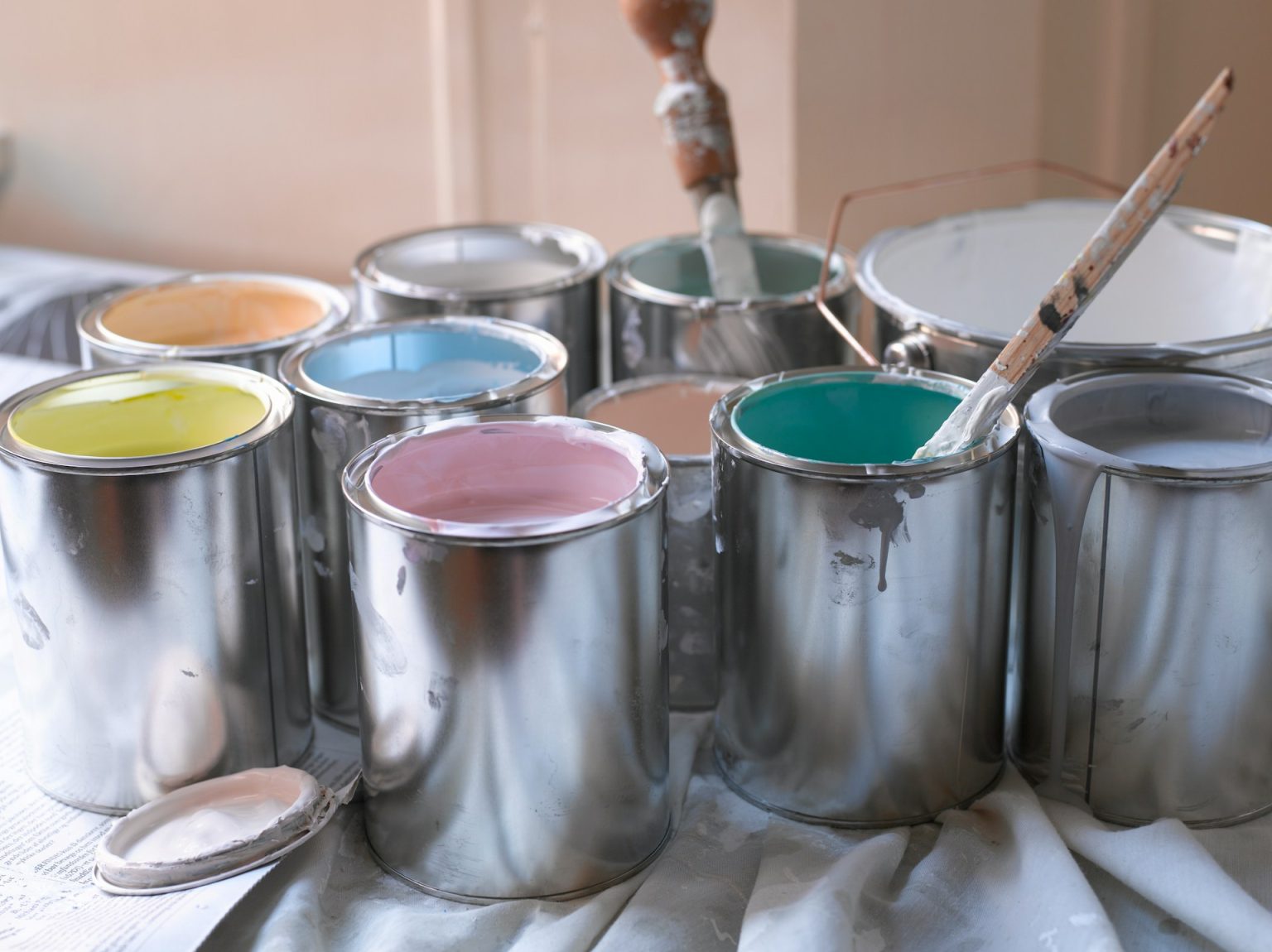Selecting that perfect shade of paint to transform your living spaces can seem daunting. However, with the right approach and guidelines, you can narrow that extensive palette into colours that suit each room’s unique purpose and design. Any interior space’s emotional impact and visual dimensions largely stem from the colours enriching its walls.
So before randomly picking hues, equip yourself with specialised knowledge. What works well for a kids’ room may not fit a formal living area.
Through research-backed tips tailored for diverse room types, unlock secrets to determining those ideal wall colours that make your bedrooms calmer, kitchens sleeker or bathrooms more rejuvenating.
Let this comprehensive guide enlighten you on harmoniously enhancing every distinct space.
Factors Influencing Interior Paint Color Selection
Consider these key aspects before finalising paint colours:
- Room Size and Natural Lighting: Dark or bright paint colours can expand or shrink room dimensions. Soft, muted tones suit tiny rooms with limited natural light, while bold, saturated colours enhance spacious, well-lit rooms.
- Furniture and Flooring: Ensure wall colours complement existing furniture and Flooring so they blend rather than clash.
- Purpose of Room and Mood: Wall colours should align with the room’s core function. Cool, calming tones are appropriate for bedrooms, and energetic, vibrant colours are suitable for activity spaces.
- Personal Color Preferences: Consider wall colours you are naturally drawn to and those that complement your style. The colour you choose must appeal to your taste.
Let’s see how these guides apply when selecting paint colours for different rooms.
Choosing Perfect Bedroom Wall Colors
Bedrooms demand colours that evoke tranquillity and romance. Here are suitable bedroom wall colour options:
Soothing, Neutral Tones
- Shades of white, like almond or antique white, infuse bedrooms with airiness and positive energy. Crisp whites also beautifully showcase ornate bedroom furnishings and artwork.
- Beige and tan shades with brown undertones create cosy, welcoming bedrooms. Combine them with soft textures and warm lighting to create the ultimate cozy and inviting atmosphere.
- Warm greys offer an elegant, versatile backdrop for various bedroom furniture styles,, from vintage carved wood to contemporary metallic.
Calming Cool Tones
- Light blues ranging from sky blue to duck egg blue conjure relaxing, dreamy bedrooms. Match with white linens and natural textures for the ultimate coastal bedroom.
- Subtle greens like sage and seafoam green establish a soothing, spa-like ambience. They beautifully complement natural wood and rattan bedroom furnishings.
- Lavender and lilac infuse bedrooms with soft romance and tranquillity. Pair with cream or gold accents for ornate luxury.
Choose soft, lighter shades of blue, green, grey, or white to create tranquil personal spaces that promote relaxation and rejuvenation.
Selecting Perfect Living Room Wall Colors
Living rooms demand flexible, inviting colours suitable for relaxation and entertainment. Here are fitting living room wall colour ideas:
Warm, Welcoming Neutrals
- Cream evokes rustic charm, working beautifully in cottage-style living rooms with many natural textures and finishes.
- Beige establishes an inviting, welcoming backdrop for varied living room furniture ranging from traditional carved wood sets to sleek metallic modular designs.
- Light brown with yellow undertones creates a snug, elegant living room environment. Pair it with leather furniture, deep-toned woods, and marble accents to recreate the elegance of classic English libraries.
Vibrant, Energising Hues
- Forest green sets an earthy tone, complementing floral fabrics and vintage Oriental rugs beautifully while contrasting light woods.
- Royal blue cultivates an uplifting, cheerful space. Pair with large windows, white trims and sunlit yellow accents for breezy, coastal living rooms.
- Mustard yellow infuses living rooms with optimism and vibrancy. Contrast with whites and neutrals to establish an eclectic, bohemian aesthetic.
Incorporate these colours with thoughtfully chosen False Ceiling Color Combinations to tie together the room’s overall decor and create a cohesive aesthetic.
Choosing Perfect Bathroom Wall Colors
From serene spa sanctuaries to high-contrast modern designs, bathrooms require fresh colours despite moisture and steam. Suitable options include:
Crisp, Hygienic White Tones
- Brilliant white creates a clean, airy bathroom with light reflection. It is accented with glossy subway tiles, marble countertops and metallic finishes for a contemporary edge.
- Antique white features warm yellow undertones that provide depth without looking dull. Pair it with clawfoot tubs, ornate mirrors, and vintage lighting for timeless luxury.
Cool, Relaxing Colors
- Seafoam and aqua green establish relaxing, zen bathrooms. Contrast with wood shelving, rattan baskets and potted greens for a spa-like tropical vibe.
- Light to mid-blues evokes a soothing, peaceful ambience. White grout, stone textures, and ocean views accent the space, providing incredible serenity.
So, pick lighter white, green or blue tones when painting bathroom walls to craft hygienic, easy-to-maintain backgrounds that retain their fresh look amidst wet conditions.
Selecting Perfect Kitchen Wall Colors
Kitchen walls endure heavy activity, moisture, oil splatters and grime. The colours you choose should conceal stains while energising the cooking space. Ideal options include:
Clean, Brightening White Hues
- Crisp white bounces back light to make kitchens appear more open and spacious. All-white kitchens with glossy backsplashes and marble countertops embody ultramodern elegance.
- Antique white with a subtle yellow tint warms up all-white kitchens wonderfully. Pair with natural wood cabinetry and stainless steel appliances to balance cool and warm elements.
Invigorating Accent Colors
- Vibrant tomato-red kitchen walls infuse passion and drama into the cooking space. Contrast with white cabinetry for stunning visual contrast.
- Ocean blue or green establish relaxing, laid-back kitchen environments. Match with weathered wood furnishings and concrete floors for breezy seaside charm.
Choose durable white, red, or blue paints to invigorate your kitchen walls, tailoring the mood to your preference—whether crisp, modern, warm, traditional, or beachy and casual.
Choosing Perfect Kids’ Room Wall Colors
Painting kids’ room walls provides a blank canvas to fuel young imaginations. Ensure colours align with your child’s unique personality.
- Energetic primary colours like red, blue and yellow spark creativity and fun. It is accented with wall decals, vibrant bedding and plush rugs to anchor the bright background.
- Soothing neutral palettes in white, beige, and grey establish calm, focused kids’ spaces that are perfect for studying. Inject colour through accent walls, artsy murals and patterned fabrics.
- Whimsical secondary colours like lilac, mint green and peach delight creative kids. Contrast with white furniture and natural wood accents to prevent overwhelming young eyes.
When deciding on kids’ room wall colours, determine whether high-energy cool tones, soothing neutrals, or dreamy pastels best reflect your child’s personality.
Tips for Selecting Interior Wall Paint Colors
Follow these expert tips to pick the perfect colours for interior wall paint:
- Test potential paint colours on room walls before fully committing. View test swatches at different times of day to judge how lighting impacts the shade.
- Select wall colours that beautifully coordinate with furniture and permanent elements like Flooring.
- If you desire drama, choose darker colours on accent walls and envelop the rest of the room in lighter, complementary tones.
- For small rooms, stick to soft, neutral or pastel wall colours to prevent overpowering the limited space.
- Use colour psychology and associations to match suitable mood-enhancing shades for diverse room purposes—for example, energising red for a home gym and relaxing blue for bedrooms.
Conclusion
Choosing paint colors for home interiors made simple through this guide’s specialised tips per room. Before picking shades, examine room size, lighting, fixed elements, purpose – opting for hues boosting aesthetics, function. Enjoy testing bold accent walls, muted backdrops until settling on the perfect look and feel for you.


